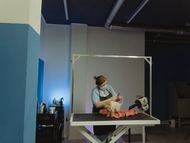Key Considerations Before Shaving Your Dog’s Fur - Bully Sticks Direct
Oct 31, 2023
It's not as easy as it looks to shave your dog. There are different types of fur on our dogs that can be trimmed and groomed, making your dog look more pretty. Here, we'll discuss the pros and cons of shaving your dog so you can do it with a more informed approach.
Why Should You Shave Your Dog's Fur?
You could be considering shaving your furry pet for a few different reasons. We get that you want your dog to look a certain way, but let us tell you in this article why shaving shouldn't always be the most preferable option. So, why do most people who own dogs also shave them?
- So that they can enjoy the summer without overheating as much
- To cut down on the amount of shedding around their house
- The state of their coat is a mess.
These are the most prevalent justifications for dog shaving, while some pet owners may have others. Let's examine why this isn't necessarily the best solution to those problems.
Preparing Your Dog for a Haircut
Before we get into the meat of the question—whether or not you should shave your dog—let's talk about the function of fur and the safety it provides our four-legged friends. You should know these fun facts about dog fur before you shave your pet:
The dog's fur acts as an insulation
During the warmer summer months, we prefer to give up heavier clothes and start wearing something lighter and breathable. However, this is not the case with dogs having heavy fur coats. You can think that a heavy fur coat will make your dog feel more heated. However, that's not the case. The fur is naturally suited to the dog.
Dogs with double coats are the ones most commonly groomed for the summer. The undercoat is the soft, downy layer right next to the skin, and the guard hairs are the longer, more protruding ones. The guard hairs prevent snow from getting through to the dog's undercoat, which keeps the dog dry and comfortable in the winter.
During the warmer months, the double coat is used for something else entirely. When summer arrives, the undercoat falls out, but the guard hairs -- which offer protection from the sun -- remain. The wind that flows through the fur coat can help regulate your dog's body temperature, in addition to protecting it from the sun. It may seem counterintuitive at first, but dogs having thick fur coats benefit from them.
The Texture of Your Dog's Coat May Vary After a Shave
Shaving a dog with a double coat prevents the dog's body from regulating its temperature as efficiently as it would otherwise. The undercoat will fall out, but the guard hairs will stay in place, as we discussed before. If you shave your furry companion in the middle of this procedure, the undercoat will grow back first. Since guard hairs are the last to grow, the various types of fur will eventually blend into one another. As a result, your dog's fur may take on a pretty different feel.
Many dog owners report that after shaving their fluffy dog, the latter's fur becomes more prone to thorns and burs. In some cases, your dog's new coat will be so sticky that he or she will essentially become a walking velcro pad.
Dogs don't shed less after being shaved
Dogs are often shaved by their owners so that there will be less hair to be shed all over the house. Despite how unmessy it may seem, this doesn't always work that way. If your dog tends to shed, shaving him will simply reduce the amount of fur that blows around your house. Even after you get it shaved, your dog’s hair will continue to fall out at the same pace it did before.
What Kind of Coat Does Your Dog Have?
The question then becomes how to identify the coat type of your dog. Let's talk about some guidelines that can assist you to a conclusion to answer this issue.
- Low-Density Coat: The skin of your dog is seen through the coat.
- Medium-Density Coat: You may still see your dog's skin when you comb through their fur but a medium-density coat is more protective than the low-density one.
- High-Density Coat: In a high-density coat, it will be hard for the water to get down to the skin of the dog while bathing it.
Other Methods for Keeping Your Dog Cool
Shaving your dog may not always be the best option. Here are other ways you can keep your dog cooler.
- When they go outside to play, keep an eye on them. If your dog seems to be slow or tired, bring your dog inside to avoid overheating.
- Always have a supply of water ready. You can provide them with water to drink and even let them play around in the water to help them be cool.
- In the warmer months, you should try to introduce your dog to aquatic sports. This can involve any type of water activity, from swimming in a pool or river to playing in the sprinklers.
- When they come inside, let them relax on the cold tile or wood floors.
- During the warmer months, it's ideal to keep the temperature at home a bit cooler. You can keep your air conditioners on or choose your wall paints wisely. Your dog will love coming home to a refreshing coolness around the furs after exploring the great outdoors.
If you want your dog’s fur to keep doing its natural job without shaving it in the summer, keep these things in mind and these ways would certainly help your dog be cooler.



